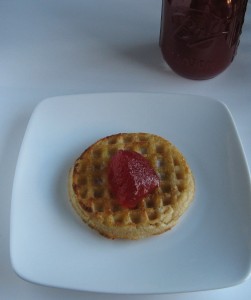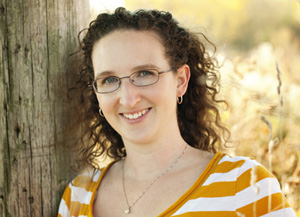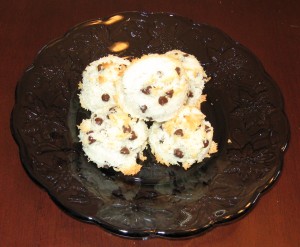
I’m honored to present this interview with Ron Hoggan, Ed.D., author of “Dangerous Grains” and “Cereal Killers,” and editor of “The Journal of Gluten Sensitivity.” Diagnosed with celiac disease in 1994, Hoggan has devoted much of his life to the pursuit and sharing of information about gluten and its related issues.
Dr. Hoggan answered my questions and provided so much excellent detail that I broke it into two posts. The first gives suggestions about what to do when your doctor refuses to test you (something that happens alarmingly often), whether or not non-celiac gluten intolerance is an autoimmune disorder, and possible reasons all grains are an issue for some. The second post will be about opioid peptides, and how gluten impacts both mood and learning disabilities.
“Dangerous Grains,” co-authored with James Braley, M.D., has great information about gluten and how it affects health. Though it’s ten years old, the information remains timely. One of my favorite things about this book is the amazing “Comprehensive List of Gluten-Associated Medical Conditions” in the back of the book.
Co-authored with Scott Adams, founder of celiac.com, Hoggan’s newest book is “Cereal Killers.” Filled with articles by many individuals, some experts in the field, some simply people sharing their gluten story, the book covers just about every imaginable gluten-related subject from diagnosis to dining out.
Q & A:
“If you feel better when gluten free, why would or should you care if you meet the medical diagnostic criteria for celiac disease?” Ron Hoggan
Q: Medical professionals and others shout from the rooftops that someone needs to be tested before they go on a gluten-free diet, but that isn’t always an easy thing to do. What advice do you have for someone who wants to be tested for celiac disease and gluten intolerance but cannot get a doctor to do so? (My aunt has rheumatoid arthritis and whole wheat makes her sick, but her doctor told her she didn’t have celiac disease – without testing her. Mrs. United States, Shannon Ford, also had a hard time getting a doctor to test her.)
A: I would argue that when a physician refuses to order a simple test, like the serum antibody tests for celiac disease along with total IgA measurement, they are working from an outdated understanding of medicine where the patient is objectified, and the patient’s input is devalued or ignored. It is probably time to find a new doctor when such testing is refused. If that is not possible, she might ask her physician to put in writing her/his reasons for refusing the test. I have found that almost always leads to the expedited ordering of serum antibody tests, but be sure to ask for a total IgA measurement as well. If there is an IgA deficiency (common in celiac disease and rare in the general population), the tests will be negative even in active celiac disease.
That said, perhaps the most important facet of this issue is that the individual who has been refused testing really has only four choices: they can change the doctor’s mind; they can live with their complaints; they can go doctor shopping, asking the new doctor to test for celiac disease; or they can try a gluten-free diet on their own.
If a person chooses to try the diet, they should understand that they are unlikely to ever get an accurate diagnosis of celiac disease even after just a few days on the diet. It sometimes takes years to develop villous atrophy, and prescribing specific durations and quantities of gluten to ingest for a gluten challenge are really just based on guesswork. Everyone is so variable that it is impossible to rule out celiac disease with certainty. Although some people do get a diagnosis following a gluten challenge, many more continue to suspect celiac disease, with good cause, despite negative test results.
On the other hand, the most reliable test is, in my opinion, the diet. If you feel better when gluten free, why would or should you care if you meet the medical diagnostic criteria for celiac disease? Just stick with the diet. But that is a problem with self-prescribing the gluten-free diet. The research shows that people are less likely to stay with the diet, long-term, in the absence of a firm diagnosis. Nonetheless, I do know people who have self-prescribed the diet and have been on it for more than twenty years.
“For instance, when gluten avoidance reverses another form of autoimmunity or provides relief from the symptoms of autoimmunity, it is difficult to argue that these are not cases of autoimmune disease driven by gluten.” Ron Hoggan
I keep hearing people say that celiac disease is an autoimmune disorder but being gluten intolerant is not. What is the difference? Is there a difference?
Autoimmune disease has repeatedly been shown to benefit from a gluten-free diet in some patients. Most of these people do not have celiac disease. They are sometimes characterized as having non-celiac gluten sensitivity or gluten intolerance. There are others with bowel symptoms similar to celiac disease but without villous atrophy. These, too, are often identified as having non-celiac gluten sensitivity or gluten intolerance. Still others have symptoms of other ailments that are not associated with celiac disease or other autoimmune disease, but appear to benefit from a gluten-free diet.
The arguments I’ve heard and read on this issue indicate that celiac disease is an autoimmune disease while those with bowel symptoms that improve on the diet are not. This argument is silly. We don’t yet know enough about non-celiac gluten sensitivity or gluten intolerance to categorically state that it is or is not autoimmune. All we can say with any confidence is that non-celiac gluten sensitivity does not cause an autoimmune attack on the intestinal wall resulting in villous atrophy. However, it may well cause other forms of autoimmunity.
For instance, when gluten avoidance reverses another form of autoimmunity or provides relief from the symptoms of autoimmunity, it is difficult to argue that these are not cases of autoimmune disease driven by gluten. There is even debate about some of the immune mechanisms at work in non-celiac gluten sensitivity. Dr. Fasano recently identified innate immune responses as characteristic of non-celiac gluten sensitivity. As mentioned earlier, I recognize that gluten impacts natural killer cells which are part of the innate immune system. We know that adaptive immune reactions are a characteristic of celiac disease. However, I would argue that there is a huge gap there that has been ignored in Dr. Fasano’s stated position (and I can’t imagine that he overlooked it by accident).
IgG and IgA serum antibodies against gliadin, a family of proteins found in wheat, are considered non-specific. Yet they indicate that our bodies are mounting an immune reaction against this very common food. They are currently dismissed because they are not specific to any single illness or group of illnesses. They are very common in many autoimmune illnesses. Yet they are also seen in apparently healthy people. So the assumption is that they are meaningless. I think that Dr. Fasano has very wisely avoided the conflict surrounding this contentious issue and is pursuing other ways of characterizing non-celiac gluten sensitivity.
I am not so wise. While I agree that anti-gliadin antibodies are non-specific, they are far from meaningless. They reveal that undigested and partly digested gluten proteins are getting into the bloodstream, which should not be happening. They also identify an immune reaction against gluten that reflects our bodies’ trying to avert the harmful impacts of gluten. Dr. Marios Hadjivassiliou, the head of neurology at the Royal Hallamshire Hospital in Sheffield, has been publishing reports for about twenty years that connect a variety of neurological diseases with anti-gliadin antibodies. They are only meaningless to those who have difficulty admitting to our broad areas of ignorance in this unexplored area of medicine.
“And if you produce selective antibodies against protein segments (peptides) that are common to one or more other members of the grain family, you will probably react to this other member or members of the grain family.” Ron Hoggan
Do you know of any research about grains other than wheat, rye and barley (and perhaps oats) being problematic for the gluten intolerant? (This one is because of my personal situation. I recently had to eliminate all other grains and have noticed a significant difference. This may be just me but I’m curious.)
Sure, just look at an image of selective antibodies on the Internet. You will see that the antibodies only identify a small segment of the harmful protein they are specifically made to combat. If the antibodies you make react to a segment of protein that is common to other members of the grain family, you will react to those as well.
Donald Kasarda published a grain family taxonomy on the Internet. If you look at that taxonomy of the grain families, you will see the relationships between the grains. For instance, while rice and corn are somewhat removed from gluten grains, they are still related. And if you produce selective antibodies against protein segments (peptides) that are common to one or more other members of the grain family, you will probably react to this other member or members of the grain family.
Sometimes, after avoiding these other grains for a few years, celiacs can return to eating them again. Sometimes they can’t. I don’t know of any way to predict an individual’s prospects on this issue.
The second half will be posted on April 5th.
Thank you Ron!
























 Thank you for visiting. I've spent many, many hours reading blogs and books about the gluten-free life. I love research. Really love it. I'm a writer so this is part of what makes me tick. But I know not everyone likes it. My goal is to bring this wealth of useful information to you here through interviews with prominent people from the gluten-free community. I hope that each time you visit, you’ll walk away with a little something new, something that helps you enjoy your gluten-free life even more.
Thank you for visiting. I've spent many, many hours reading blogs and books about the gluten-free life. I love research. Really love it. I'm a writer so this is part of what makes me tick. But I know not everyone likes it. My goal is to bring this wealth of useful information to you here through interviews with prominent people from the gluten-free community. I hope that each time you visit, you’ll walk away with a little something new, something that helps you enjoy your gluten-free life even more.